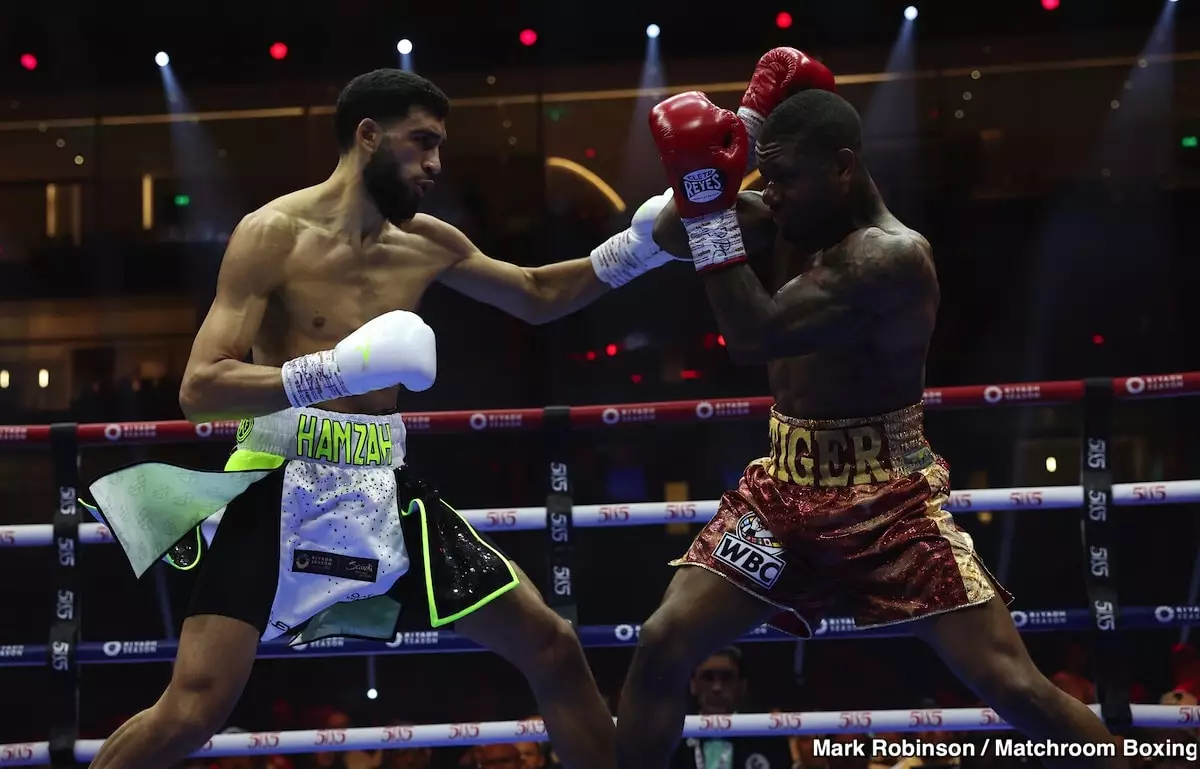In the highly competitive world of boxing, decisions are often scrutinized. Hamzah Sheeraz, an undefeated middleweight with a record of 21 wins, 17 by knockout, recently faced significant scrutiny after opting to challenge WBC middleweight champion Carlos Adames instead of IBF and WBO champion Janibek Alimkhanuly. Critics have labeled this choice as an act of “ducking,” suggesting that Sheeraz is deliberately avoiding a potentially arduous bout with Alimkhanuly, who is ranked as one of the top fighters in the division.
However, Sheeraz has publicly refuted these claims, arguing the decision is grounded more in strategic and financial reasoning than fear. The boxer explained that he has held the WBC mandatory status since his notable knockout victory over Austin ‘Ammo’ Williams, which positions him not only as a contender but as someone with business interests to prioritize. Hence, taking on Adames, viewed as perhaps the most vulnerable champion at 160 pounds, appears to be a calculated decision aimed at maximizing potential earnings.
The financial aspect of boxing cannot be overlooked. In a sport where prize fights can significantly influence a boxer’s career trajectory, Sheeraz’s inclination toward a match with Adames can be contextualized in terms of monetary benefits and mandatory obligations. After his victory in June, Sheeraz felt an urgency to fight for a championship title, particularly with the WBC.
“It was Frank’s call, and I was #1 mandatory with the WBA after the Ammo Williams fight,” he stated. This implies that Sheeraz had commitments that necessitated action, and the allure of a title bout with Adames was hard to pass up. Choosing a champion who is perceived as less threatening may arguably stabilize his career, allowing him to attain a major title without facing the daunting challenge posed by someone like Alimkhanuly or even WBA champion Erislandy Lara.
Amidst the business strategy, there lies an undeniable cloud of doubt hovering over Sheeraz. Critics point out that his recent performances, particularly against Williams, exposed vulnerabilities that could leave him susceptible in high-pressure situations. The argument goes that he is not the invincible fighter that some of his UK supporters believe he to be. By opting for Adames, whose status as a champion is sometimes deemed as circumstantial or a product of favorable matchmaking, it raises questions about whether Sheeraz is avoiding potential exposure.
It would indeed have served Sheeraz better to have pursued matches with fighters who are considered genuine threats. Had he chosen to face Janibek or Lara, he could have silenced critics and established himself as a formidable presence in the division. Instead, without taking those risks, Sheeraz runs the risk of reinforcing perceptions that he is merely a product of hype and not genuine talent.
In response to the accusations of ducking competition, Sheeraz argued the infamous notion of ‘ducking’ is often easier to deploy than reality. “It’s silly… It all comes down to business,” he said, positioning his decision within the broader context of boxing economics. In many ways, this response encapsulates a reality where fighters must balance personal aspirations with financial viability.
Moreover, Sheeraz pointed out that Alimkhanuly is not a massive name yet is seen as a highly skilled opponent. This highlights the dichotomy in boxing where the most challenging fights do not always translate into the most bankable ones. Thus, Sheeraz’s approach—while perhaps strategically sound—also leaves him vulnerable to public opinion that deems him the lesser warrior based on whom he chooses to face.
As the boxing world watches closely, Hamzah Sheeraz is poised to face Carlos Adames. The unfolding narrative around this match will not only shape his career but will also dictate the future discussions regarding strategy versus courage in the ring. Ultimately, Sheeraz has an opportunity to redefine public perception. A decisive victory over Adames could validate his mantle, while a lackluster performance may further entrench him in the narrative of being yet another fighter who opts for the path of least resistance. Only time will tell how this contentious situation plays out in the ever-evolving landscape of boxing’s middleweight division.

